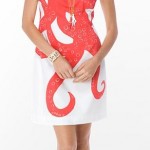
It may not roar in with the fury that our New England neighbours are weathering, but our winter is just around the corner. Follow along, and you can catch and keep the first snowflakes of the year. It’s a great way for your family to explore science outdoors, and to see some beautiful natural shapes and patterns.
Here’s what you will need: something nice and dark to catch snowflakes on (black construction paper is great), a small, soft paintbrush to sort them, microscope slides and cover slips and some superglue. As a warning, superglue (cyanoacrylate) will adhere to skin very quickly – acetone (contained in many nail polish removers) on a cotton swab should dissolve it, but exercise great caution if letting children use it.



First, make sure your materials are cold or you’ll melt your snowflakes! Catch some flakes on your paper or cardboard (dark colours improve contrast). Choose your favourites, pick them up with a paint brush and place them on your slide. Now simply put a drop or two of superglue onto your individual flakes, put on your cover slip (press gently) and leave in the freezer to harden for a week or two. You can then examine them under a magnifying glass or a microscope and discover their beauty in detail. And the best part – they won’t melt!
Snowflakes are formed high in clouds as water freezes together into tiny, intricate crystals. Every snowflake is unique, but they always have six points unless broken (they are “hexagonal”), which is due to the chemistry of water.
As the temperature starts to drop, it’s a great time to come spend some quality indoor time at Discovery Centre. Bring the family to take in a weekend Great Balls of Fire show, or have your children spend a day with us during PD or Winter Break Camps – we’re always ready to warm your toes, and more importantly, your brain!
For more great things to discover – visit the Discovery Centre on Barrington Street in Halifax, check out their website or join them on facebook.
Source: http://feedproxy.google.com/~r/hrmparent/CLkz/~3/3mMbltA1vVA/



